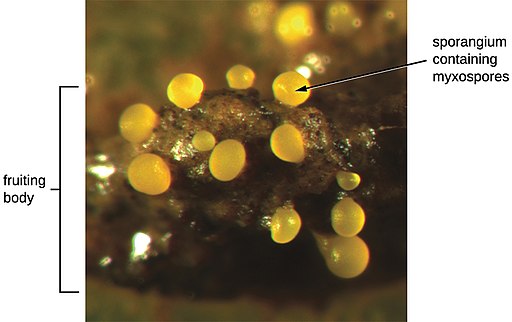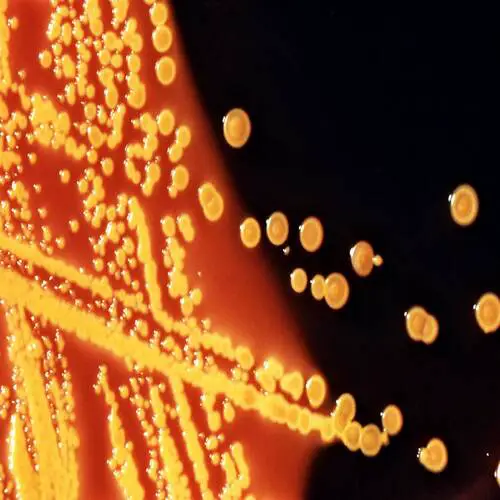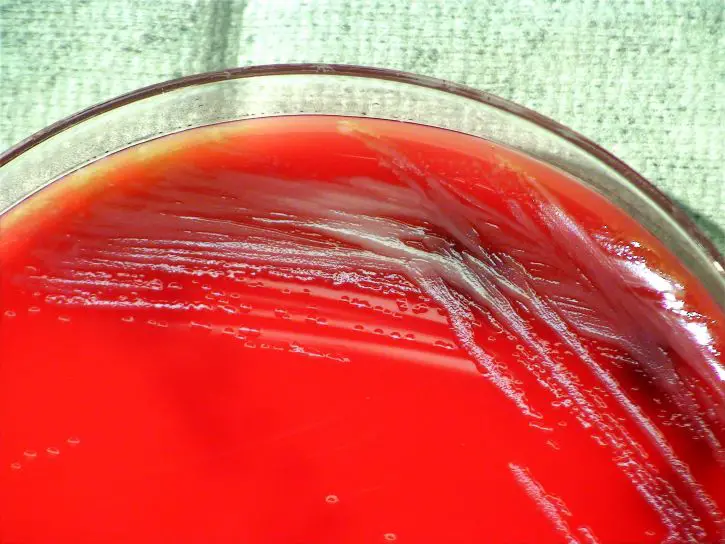Endospore Stain
Definition, Techniques, Procedures and Significance
Endospores Definition
A vegetative cell (bacteria) is a normal bacterium that grows and multiplies in favorable environmental conditions. Here, favorable conditions simply mean that there is sufficient nutrients, optimal temperature range and moisture etc that support the growth and multiplication of the cells allowing them to thrive.
As a result of poor/extreme environmental conditions, vegetative cells undergo a process referred to as sporulation to form endospores.
Once such bacteria as Bacillus spp and Clostridium spp find themselves in unfavorable conditions, sporulation begins with the cells packing everything they need to survive through these extreme conditions.
Unlike the vegetative cells, endospores are dormant (inactive) and highly resistant to such extreme conditions as very high temperatures, chemical changes, enzymatic actions and desiccation among others. This allows the endospores to protect and preserve the genetic material of the cell and allow it to thrive once the cell finds itself in favorable conditions again.
* Sporulation is the process through which endospores are formed. The entire process takes 8 to 10 hours. Whereas endospores reside inside the original cell, free spores (spores) exist outside the cell on their own.
A Brief Summary of the Sporulation Process
- Bacteria chromosome is replicated
- Plasma membrane separates the replicated chromosomes to form a forespore
- A second membrane composed of calcium and dipicolinic acid encloses the forespore
- An external spore coat encloses the endospore
- The endospore is released as the vegetative cell it was formed from dies
* Endospores are likely to be found in soil and aquatic environments.
Image of an Endospore Diagram
Endospore Stain
Essentially, endospore stain is a differential stain. As such, it allows for the differentiation of structures and thus the characterization of a cell based on its physical and chemical nature. In this case, endospore stain as a differential staining technique is largely used for the purposes of distinguishing between vegetative cells and endospores.
Endospore Staining Technique/Procedure
For endoscopes, there are two major staining techniques used. These include:
- Schaeffer-Fulton staining technique
- Dorner's Method staining technique
Schaeffer-Dulton Technique
This is the most common technique for endospore staining.
Requirements
- Malachite green 0.5% (this is the primary stain) - It can simply be prepared using 0.5 grams of malachite green with 100 ml of water
- Tap/distilled water (decolorizing agent)
- Safranin (2.5%) - This is the counter stain and can be easily prepared using 2.5 grams of safranin O and 100ml of 95% ethanol
Staining Procedure
- Smear the sample at the center of a clean microscope slide
- Allow the slide to dry (air dry) and then heat fix the smear
- Place a blotting paper on the slide (cut to fit the slide) and saturate it with malachite green stain solution
- Gently heat the slide until it starts evaporating (make sure the slide is placed on a staining rack when heating) - heating can either be done using a Bunsen burner of boiling water.
- Keep heating, removing and re-heating the slide for between 3 to 5 minutes while adding a few drops of malachite green to keep the blotting paper moist. However, avoid overheating. This process is simply aimed at steaming the slide.
- Carefully remove the slide from the rack and allow it to cool for about a minute or two
- Thoroughly wash the slide using tap water or distilled water
- Counterstain the slide with safranin for about a minute
- Rinse the slide and allow it to dry (air dry)
- Observe under the microscope
Steps in the Procedure
Unlike the vegetative cells, endospores possess a permeability barrier. This prevents dyes from entering to stain the structures of the cell. For this reason, the barrier has to be destroyed, which is why heat is used. Through heat fixing, the cortex of the endospore is penetrated allowing for the dye to interact with the petodoglycan and thus produce desired effects. In this case, heat acts as a mordant.
* a mordant is a substance that is used alongside the stain/dye to fix it in a given material
After heat fixing, the slide is washed using tap water or distilled water. Here, water is used as a decolorizer. Because malachite green binds relatively weakly, it can be washed off easily. However, it cannot be washed off easily once it is locked in the spore wall.
Once they take in the dye, endospores retain the dye and will be resistant to de-staining. However, vegetative cells will easily lose the stain when washed with water because they lack the spore wall. After the initial washing, a counter stain (safranin) is used. The purpose of the counter stain is to stain the vegetative cells that lost the primary stain.
Here, it is worth noting that the primary stain and the secondary stain are of different colors. As such, they allow the technician to differentiate different types of cells under the microscope. Whereas the counterstain (safranin) is pink/reddish in color, the primary stain (malachite green) is green in color. Therefore, endospores will appear green in color while the vegetative cells will pink/reddish in color under the microscope.
Image of an Endospore under the Microscope
Dorner's Method
Requirements
- Carbolfuchsin stain
- A decolorizing agent (acid-alcohol)
- A counterstain (nigrosin solution)
Procedure
- Make a smear on a clean glass slide
- Allow the slide to dry (air dry) and then heat fix
- Place a blotting paper on the slide (covering the smear) and saturate with carbolfuschin to steam (for about 5 minutes) - This should be repeated while adding drops of carbolfuchsin and avoiding overheating (simply heat to steam)
- Remove the blotting paper and allow the slide to dry for about a minute
- Wash the slide with acid-alcohol for about a minute to decolorize and then rinse with tap water
- Add a drop of nigrosine on the smear to form a thin film
- Allow the slide to dry
- Observe under the microscope using oil immersion
* While different stains are used in this technique, the purpose of each step taken here is similar to the one described above.
When viewed under the microscope, endospores will be red in colour.
Significance of Endospore Stain
In biology, endospore staining is used for the purposes of differentiating and classifying bacteria. On the other hand, it is also very important in medicine and the food industry.
Because they are tough and hard to destroy it is very important to determine whether they are present in canned food and thus avoid food poisoning to protect consumers.
Related and Interesting articles:
Gram Staining - Purpose, Procedure and Preparation
Capsule Stain - Definitions, Methods and Procedures
Learn more about Cell Culture, Cell Division, Cell Differentiation and Cell Staining.
Return from Endospore Stain to MicroscopeMaster Home
References
Jackie Reynolds, Richland College, BIOL 2421. Fall 2011,
Marise A. Hussey, Anne Zayaitz. 2007. Endospore stain protocol.
Find out how to advertise on MicroscopeMaster!
![Endospore Diagram By Alayna5231 (Own work) [CC BY-SA 4.0 (http://creativecommons.org/licenses/by-sa/4.0)], via Wikimedia Commons Endospore Diagram By Alayna5231 (Own work) [CC BY-SA 4.0 (http://creativecommons.org/licenses/by-sa/4.0)], via Wikimedia Commons](https://www.microscopemaster.com/images/Endospore_Diagram.png)
![Endospore under the microscope By WMrapids (Own work) [CC0], via Wikimedia Commons Endospore under the microscope By WMrapids (Own work) [CC0], via Wikimedia Commons](https://www.microscopemaster.com/images/Bacillus_subtilis_endospore_stain.png)




